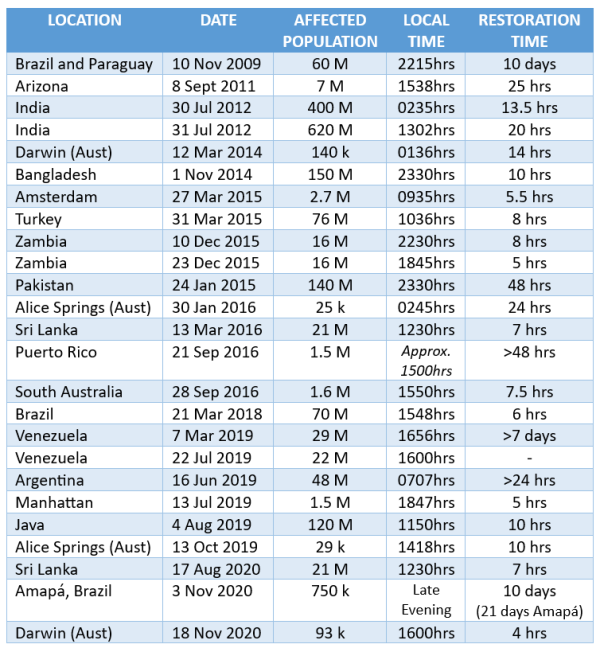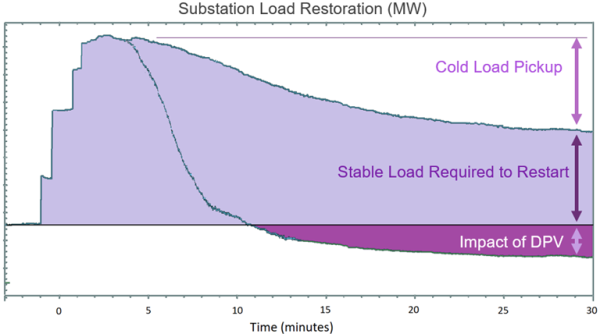Cigre Australia
empowering
networking
global know-how
The Sunny Day Restoration of a Power System
A ‘sunny day scenario’ has historically been considered a ‘best case scenario’ when analysing and mitigating power system risk. A system black and associate power system restart is already the most challenging situation system operators can face and achieving a prompt successful system restart is increasingly difficult today under a sunny day scenario due to the changing portfolio of generation sources. The following article focusses on the Australian power system. Further information globally on this and related issues is provided in Technical Brochure 911, “Power system restoration accounting for a rapidly changing power system and generation mix”, produced by Working Group C2.26. Darren Spoor, who produced this article, was also a member of the Working Group.
The probability of a system shutdown and restart event is commonly dismissed when assessing the economic benefit of increased power system resilience. Nevertheless, significant system disturbances or power system restorations occur on a global basis at least once every year.

Table 1 - An Australian perspective on Significant Power System Restorations in the last 25yrs.
The consequences of a full or partial power system restart are numerous and can include specific public safety outcomes such as in hospitals, heavy industry and sewerage treatment.
One of the most notable impacts can be the loss of telecommunications which could lead to the eventual loss of emergency services calling functionality. In the interim, fire and rescue services may struggle to cope after being inundated with automated alarm systems.
Economic impacts are often severe and can be seen as a temporary loss of gross domestic product and permanent economic impacts, such as potential damage to industrial processes and smelters if supply is not restored within a few hours.
Stabilising load is required in the early stages of a system restoration to allow newly synchronised generators to maintain a stable operation, and to maintain stable voltage profiles in the power system. Rooftop solar, or distributed photovoltaic (DPV) systems are beginning to pose a significant risk to power system restoration as many distribution feeders are net exporters of energy during daylight conditions. Moreover, previously stable feeders can now fluctuate with cloud cover.

Figure 1 – Load restoration in an urban network after several hours.
It’s worth noting that 14 of the system restoration events in Table 1 would have been adversely impacted by the recent promulgation of rooftop solar if they happened today. This will soon leave power system operators with only two viable options. The first of these is to apply a ‘best endeavours’ restoration approach until evening, noting backup battery systems will slowly run down. The second and preferable option is to have the ability to control the output of rooftop solar systems to allow distribution system operators to establish stable load blocks.
Significant work has now gone into the control of rooftop solar systems with the aid of metering retailers, Wi-Fi connection to smart meters or audio-frequency injection. Most of these options require internet telephony, which will not be available during a power system black or during restoration. For this reason, and Australia’s world-leading uptake of rooftop solar, an option being considered is a revision to Australian Standard AS4777 to ensure rooftop inverter commutation is blocked for a specified time following the loss of grid supply. This would enable distribution system operators to establish stable load blocks required to facilitate a power system restoration. This approach would reduce the economic and societal impact of a ‘sunny day’ restart event in Australia.
Technical Brochure 911 is free for members and €260 for non-members.
